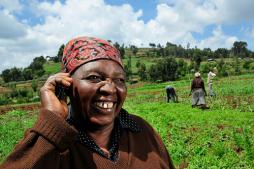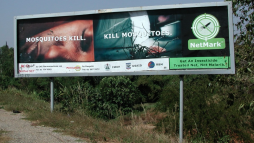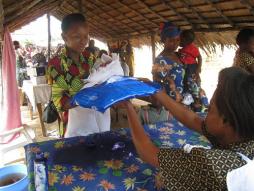supply chain management
Posted by EKStallings on Nov 04, 2011
Cell-Life, Case Study 11 data sheet 935 Views
Author:
Willmers, Michelle, Cheryl Hodgkinson-Williams
Abstract:
This case study analyses the ways in which the Cell-Life initiative, a collaboration between UCT‘s (University of Cape Town) departments of Civil and Electrical Engineering and the Cape Peninsula University of Technology (CPUT), utilises technology-based solutions (in particular, cellphone technology) for the life management of patients living with HIV/AIDS.
Cell-Life is a model example of a socially responsive endeavor which utilizes technology to overcome limitations and constraints. The use of cellphones to save lives by aiding adherence to the ARV medication regime and gather data is a remarkable contribution to the fight against the HIV/AIDS pandemic and signifies an intersection between the academic endeavour, innovation and the lives of ordinary people on the ground. The open approach taken by the organisation in sharing its work also illustrates how research is able to contribute to the 'undead count' (i.e. the number of lives saved) of academic research, which must surely be considered the greatest achievement of any endeavor.
Posted by EKStallings on Oct 06, 2011
Mobile phones may be one mechanism to increase effectiveness and efficiency for agricultural extension in low-income countries. Agricultural extension, broadly defined as the delivery of information to small-scale farmers, was developed to counteract information asymmetries suffered by farmers with limited access to information sources like landline phones, newspapers, radios and TV programming. This has meant that farmers have not been able to take advantage of innovations in agricultural production (from seed types to information about pest control or crop rotations) and have been largely unable to increase their yields and hence incomes.
While agricultural extension programs have tried to counteract this lack of information, they have also been long plagued by lack of scale, sustainability, relevance and responsiveness. Mobile phones, with their low-cost and capability for quick communication, may resolve many of these obstacles.
Dial “A” for Agriculture: A Review of Information and Communication Technologies for Agricultural Extension in Developing Countries, by Jenny C. Aker, a well-known researcher in the field, provides a broad overview of the shift toward using mobile phones in extension services and offers critical guides for assessing the effectiveness of such programs.
Half a century ago, extension programs were conceived to fill the glaring gap between agricultural innovation and crop yields. Despite great advances in agricultural innovations in the latter part of the twentieth century, farmers in Latin America and especially Sub-Saharan Africa have only seen slight increases in yields. Extension programs,which have largely taken the form of in-person visits and training, have consistently suffered from questions of cost-effectiveness.
Posted by MohiniBhavsar on Nov 08, 2010
Mobile phones are being tried and tested in myriad ways in health care. They are used for data collection and disease surveillance, for ensuring treatment compliance, for managing health information systems and point-of-care support, for health promotion and disease prevention, and for delivering emergency medical services. Clearly, m-health, as this growing field is dubbed, is here to stay.
At the same time, achieving scale and sustainability in most m-health projects has been a challenge. One of the key aspects of beginning to think about ways to integrate m-health into health systems in a sustainable way is to establish financial systems to pay for health services and to ensure financial accountability within programs.
Posted by PenelopeChester on May 25, 2010
The human and economic cost of malaria in Nigeria is staggering. There are currently 110 million clinically diagnosed cases in a population of 151 million. Malaria kills 250,000 children under five years old in Nigeria every year, and is the cause of 11% of maternal deaths. 60% of out-patient visits and 30% of hospitalizations in the country are malaria-related.
In addition to the enormous toll malaria takes on public health, it is also expensive. 132 billion Naira (USD $870 million) is lost every year in the form of malaria prevention and treatment costs and from the loss of overall economic productivity.
And yet in spite of the risk malaria poses to the Nigerian people, health surveys from 2006 to 2008 indicated that only 8% of households in the country owned at least one insecticide-treated net (So-called ITNs).
| Malaria Kills: Distributing 63 Million Bednets in Nigeria with RapidSMS data sheet 10311 Views |
| Countries: |
Nigeria
|
Posted by KatrinVerclas on Mar 15, 2009
This post was written by Marcia Stepanek of Cause Global where it was orginally published. Marcia graciously allowed up to repost it here.



